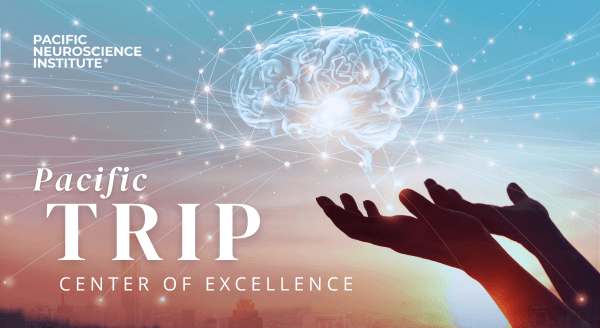
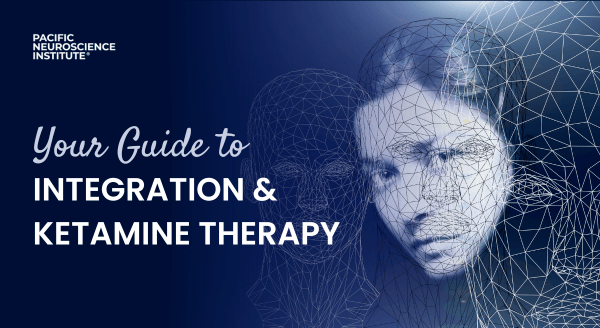
Maximizing the Benefits of Ketamine Therapy through Integration
by Brianna Rauchman
UPDATE – July 1, 2025: Ketamine therapy is no longer available through Pacific Neuroscience Institute. These services will continue to be provided with the same high standard of care and expertise by the exceptional providers who have transitioned to Psychedelic Science Institute . Clinics are located in Santa Monica and Hollywood.
Ketamine-assisted psychotherapy (KAP) is emerging as a significant therapeutic approach for various mental health conditions. However, the efficacy of KAP is greatly enhanced when coupled with a crucial component: integration. Learn how Pacific Neuroscience Institute® (PNI®)’s Treatment & Research in Psychedelics (TRIP) Center uses integration to optimize patient outcomes.
Understanding Integration in Ketamine-Assisted Psychotherapy
KAP pairs ketamine, a dissociative anesthetic, with psychotherapy to treat conditions like depression, anxiety, and PTSD. Unlike traditional psychiatric medications that take weeks to show effects, ketamine offers rapid relief of symptoms.
However, like a bandage on a wound, it’s not a complete solution on its own. This is where psychotherapy comes in, working alongside ketamine to provide deeper, more lasting healing.
We know that mental illness is more complex than just a chemical imbalance. Ketamine is a chemical catalyst that drives profound change but we need integration to use that catalyst to produce lasting results.
Juliana Hudson, LCSW, Therapist & Facilitator at the Pacific TRIP Center
An Essential Ingredient: Integration
Picture integration as the bridge connecting your experiences during a ketamine session with your everyday life. It’s what turns these sessions from fleeting moments of insight into lasting changes in how you think and feel. Here’s why integration is so crucial:
- Make Sense of the Experience: Without help, the feelings and insights that emerge from the ketamine experience can be difficult to fully understand or make use of. The psychotherapeutic process helps individuals understand and apply these insights.
- Emotional Processing: Ketamine can evoke intense emotions and memories. Integration offers a safe space to process these emotions.
- Planning for Change: The therapist assists the patient in translating the insights and emotional insights into actionable steps towards behavioral change. This may involve setting goals, developing coping strategies, and addressing maladaptive thought patterns.
- Preventing Confusion: Without integration, reconciling the profound experiences of a ketamine session with everyday reality can be challenging. Psychotherapy provides clarity in this process.
- Long-Term Healing: The ultimate goal of KAP is not just immediate relief but enduring healing and personal growth. Integration is key to sustaining progress achieved during the sessions.
As ketamine can produce profound and deeply personal experiences, integration provides the structure to explore and process these encounters in a secure, nonjudgmental environment.
Micah Linton, PsyD, Licensed Clinical Psychologist at the Pacific TRIP Center
The Process of Integration in Therapy Sessions
The integration process typically involves several key steps:
- Debriefing the Experience: Immediately following the ketamine session, the therapist engages with the patient to discuss their experience. This debriefing helps to ground the patient and begins the process of integrating the insights gained.
- Therapeutic Dialogue and Reflection: Subsequent therapy sessions focus on discussing and reflecting upon the ketamine experience. The therapist helps the patient explore the meanings and implications of their experience.
- Developing a Personalized Integration Plan: Based on the insights and emotional insights from the session, the therapist and patient collaboratively develop a personalized integration plan. This plan outlines specific steps the patient can take to implement insights into their daily life.
- Ongoing Support and Adjustment: The therapist provides ongoing support, helping the patient to adapt their integration plan as needed and to cope with any challenges that arise during the process.
It is important to emphasize that the integration process can and should be tailored to match the unique journey of every patient. According to Karina Sergi, MS, MFT, Director of the Ketamine-Assisted Psychotherapy Program at the Pacific TRIP Center, “the integration process is as varied and unique as the person themselves.” Partnering with a reliable psychotherapist can bring symptom relief and have long-term life-changing benefits, as it helps individuals reflect on their intentions, gain insights, and set therapeutic goals.

Ketamine-Assisted Psychotherapy at Pacific Neuroscience Institute
The integration phase in KAP is not just an adjunct to the pharmacological effects of ketamine; it is a critical component that ensures the translation of transient psychedelic experiences into lasting psychological growth and change. The therapist’s role in guiding and supporting the patient through this process is paramount.
At the Pacific TRIP Center, we recognize the importance of this integration process in our KAP programs. We focus on providing comprehensive care that includes skilled psychotherapeutic support to maximize the benefits of KAP for our patients.

Interested in learning more about Ketamine-Assisted Psychotherapy? Schedule a consultation at a PNI clinic.
Schedule
Useful Links
About the Pacific TRIP Center
The Pacific TRIP Center, led by Keith Heinzerling, MD, is at the forefront of a groundbreaking era in mental healthcare. We strive to use psychedelic-assisted therapy to transform the way we treat mental health and improve the lives of our patients. Our goal is to gain a better understanding of neuroplasticity, the root causes of mental distress, and the essence of the human mind. By conducting clinical trials and expanding our scientific knowledge of how psychedelic substances can help heal the mind, we aim to provide more choices and a more promising future for individuals coping with mental illness. Learn more.
Contact Information for KAP Program: 310-582-7612
Related Articles
Related Videos
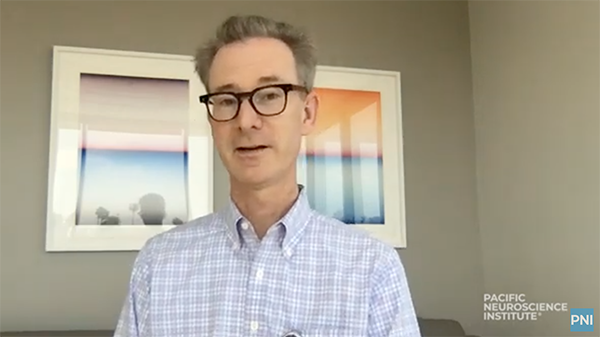 Psychedelic-Assisted Therapy with Ketamine at PNI
Using ketamine in a psychedelic-assisted approach, we treat people 16 years and older who are treatment-resistant or who wish to effectively tackle deep-rooted, unresolved trauma that has not been adequately…
Psychedelic-Assisted Therapy with Ketamine at PNI
Using ketamine in a psychedelic-assisted approach, we treat people 16 years and older who are treatment-resistant or who wish to effectively tackle deep-rooted, unresolved trauma that has not been adequately…
 Psychedelic-Assisted Ketamine at Pacific Neuroscience Institute | 0:15 Second Spot 2023
Psychedelic-Assisted Ketamine at Pacific Neuroscience Institute | 0:15 Second Spot 2023
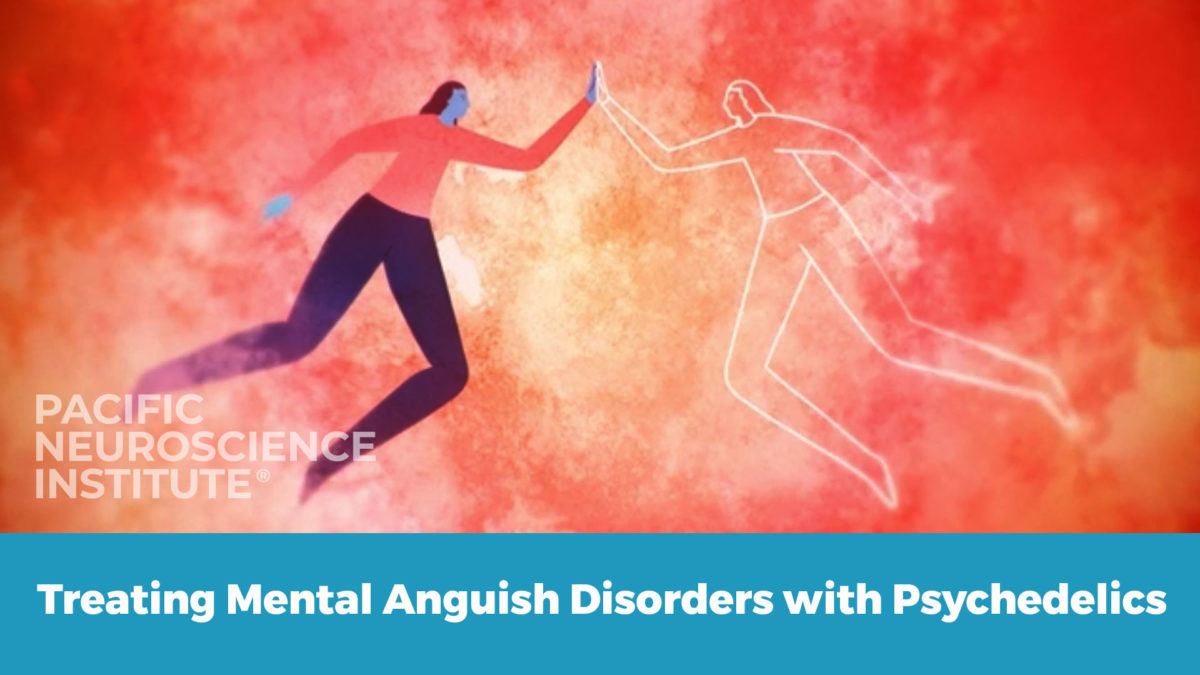 Treatment & Research In Psychedelics (TRIP) at Pacific Neuroscience Institute | Explainer
At PNI’s Treatment & Research In Psychedelics (TRIP) Program, we conduct clinical trails at the forefront of innovative and transformative medicine. TRIP, spearheaded by Daniel Kelly, MD and Keith Heinzerling,…
Treatment & Research In Psychedelics (TRIP) at Pacific Neuroscience Institute | Explainer
At PNI’s Treatment & Research In Psychedelics (TRIP) Program, we conduct clinical trails at the forefront of innovative and transformative medicine. TRIP, spearheaded by Daniel Kelly, MD and Keith Heinzerling,…
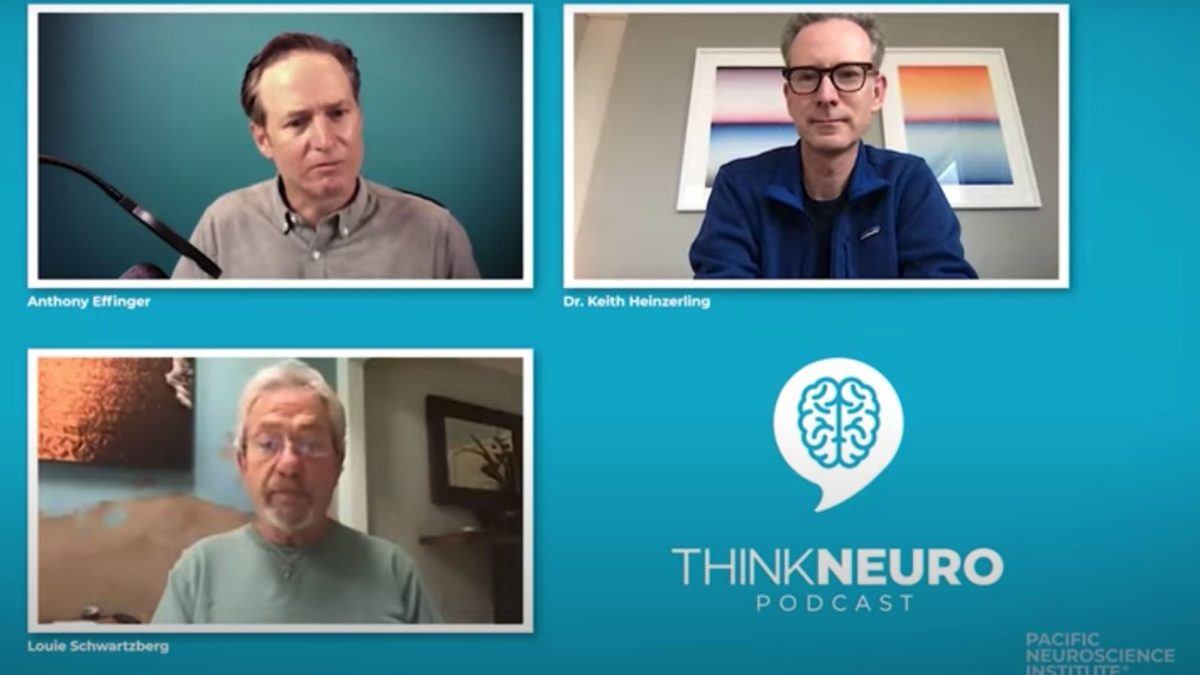 Think Neuro Podcast: The Promise of Psychedelics | Dr. Keith Heinzerling & Louie Schwartzberg
Addiction and depression are two of the most widespread conditions in all of medicine. After decades of research, doctors are still looking for alternatives for when medication and cognitive training…
Think Neuro Podcast: The Promise of Psychedelics | Dr. Keith Heinzerling & Louie Schwartzberg
Addiction and depression are two of the most widespread conditions in all of medicine. After decades of research, doctors are still looking for alternatives for when medication and cognitive training…
 Psychedelics Renaissance | Dr. Daniel Kelly
Dr. Dan Kelly is the director and one of the four co founders of the Pacific Neuroscience Institute, a multispecialty group of over 35 physicians working across nine centers of…
Psychedelics Renaissance | Dr. Daniel Kelly
Dr. Dan Kelly is the director and one of the four co founders of the Pacific Neuroscience Institute, a multispecialty group of over 35 physicians working across nine centers of…
 NBC News Features Treatment & Research In Psychedelics (TRIP) at PNI
NBC News features Pacific Neuroscience Institute’s Dr. Daniel Kelly & Dr. Keith Heinzerling, and filmmaker Louie Schwartzberg, and PNI’s groundbreaking psychedelic-assisted clinical trial for alcohol use disorder which launched in…
NBC News Features Treatment & Research In Psychedelics (TRIP) at PNI
NBC News features Pacific Neuroscience Institute’s Dr. Daniel Kelly & Dr. Keith Heinzerling, and filmmaker Louie Schwartzberg, and PNI’s groundbreaking psychedelic-assisted clinical trial for alcohol use disorder which launched in…
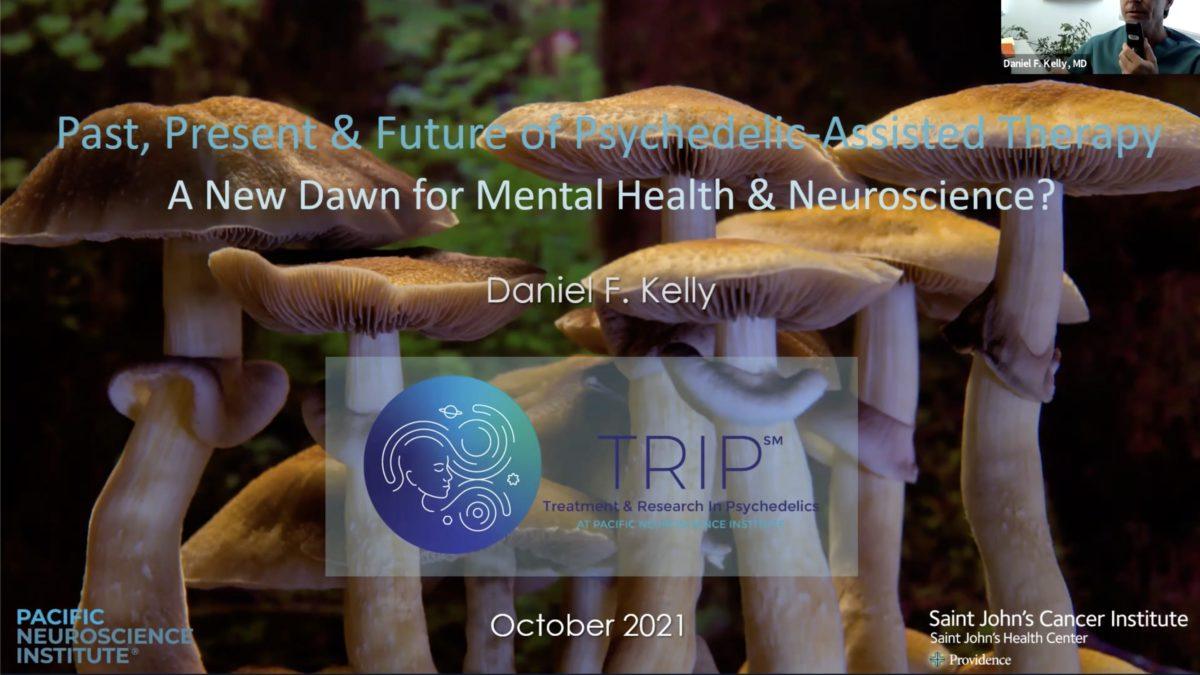 10. October, 2021: Past, Present, and Future of Psychedelic-Assisted Therapies
10. October, 2021: Past, Present, and Future of Psychedelic-Assisted Therapies
 Psychedelic-Assisted Therapy at Pacific Neuroscience Institute
Dr. Keith Heinzerling is an addiction medicine specialist and Director of Treatment & Research In Psychedelics (TRIP) at Pacific Neuroscience Institute in Santa Monica, CA. Learn about how psychedelic-assisted therapy…
Psychedelic-Assisted Therapy at Pacific Neuroscience Institute
Dr. Keith Heinzerling is an addiction medicine specialist and Director of Treatment & Research In Psychedelics (TRIP) at Pacific Neuroscience Institute in Santa Monica, CA. Learn about how psychedelic-assisted therapy…
 Brain Injuries and Psychedelics
Ian McCall is a former professional MMA fighter who suffered from symptoms of traumatic brain injuries. After retirement, McCall experienced confusion, anger issues, depression, and suicidal ideation. Feeling hopeless, he…
Brain Injuries and Psychedelics
Ian McCall is a former professional MMA fighter who suffered from symptoms of traumatic brain injuries. After retirement, McCall experienced confusion, anger issues, depression, and suicidal ideation. Feeling hopeless, he…
 39. A Life-Changing Clinical Trial with Psychedelics | Vikki’s Grateful Patient Story
Vikki was walking her dog and listening to NPR in Santa Monica one day, when she heard an advertisement for an unusual medical trial. Pacific Neuroscience Institute was studying whether…
39. A Life-Changing Clinical Trial with Psychedelics | Vikki’s Grateful Patient Story
Vikki was walking her dog and listening to NPR in Santa Monica one day, when she heard an advertisement for an unusual medical trial. Pacific Neuroscience Institute was studying whether…
 Psychedelic-Assisted Therapy: A New Dawn for Mental Health | Daniel Kelly, MD
Adapted from lecture at Claremont McKenna College Thu, September 16, 2021 Alum, Daniel Kelly, M.D. ’82, a neurosurgeon and neuroscientist, discusses the history, current state and future opportunities of psychedelic-assisted…
Psychedelic-Assisted Therapy: A New Dawn for Mental Health | Daniel Kelly, MD
Adapted from lecture at Claremont McKenna College Thu, September 16, 2021 Alum, Daniel Kelly, M.D. ’82, a neurosurgeon and neuroscientist, discusses the history, current state and future opportunities of psychedelic-assisted…
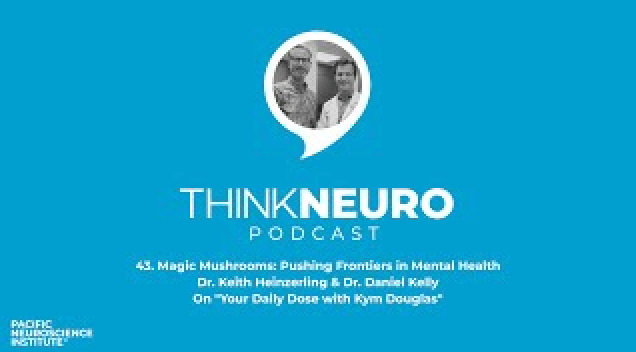 43. Magic Mushrooms: Pushing Frontiers in Mental Health – Guest Podcast | Dr. Kelly, Dr. Heinzerling
This episode comes from the Saint John’s Health Center Foundation’s podcast, Your Daily Dose with Kym Douglas. Pacific Neuroscience Institute experts, Dr. Keith Heinzerling and Dr. Daniel Kelly discuss the…
43. Magic Mushrooms: Pushing Frontiers in Mental Health – Guest Podcast | Dr. Kelly, Dr. Heinzerling
This episode comes from the Saint John’s Health Center Foundation’s podcast, Your Daily Dose with Kym Douglas. Pacific Neuroscience Institute experts, Dr. Keith Heinzerling and Dr. Daniel Kelly discuss the…

Psychedelic-Assisted Therapy with Ketamine at PNI

Psychedelic-Assisted Ketamine at Pacific Neuroscience Institute | 0:15 Second Spot 2023
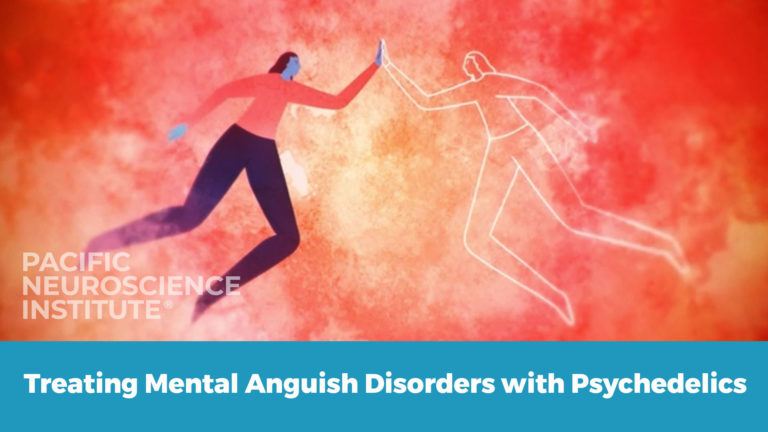
Treatment & Research In Psychedelics (TRIP) at Pacific Neuroscience Institute | Explainer
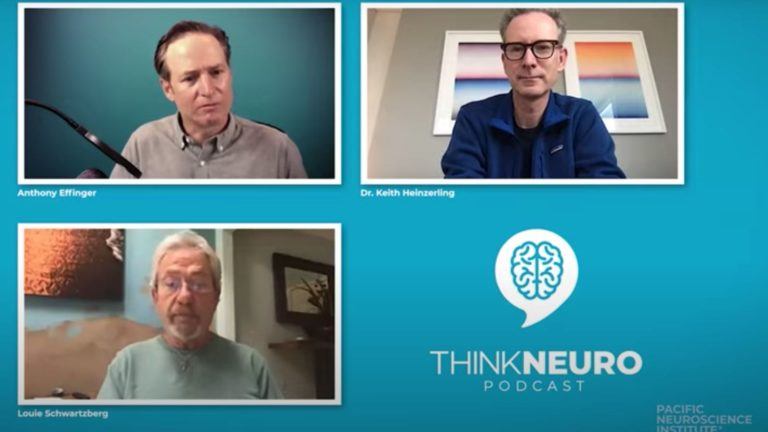
The Promise of Psychedelics | Dr. Keith Heinzerling & Louie Schwartzberg

Psychedelics Renaissance | Dr. Daniel Kelly

NBC News Features Treatment & Research In Psychedelics (TRIP) Program at PNI
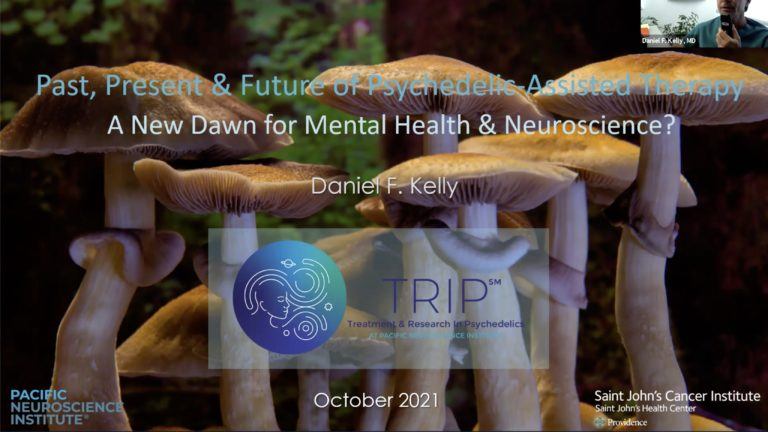
10. October, 2021: Past, Present, and Future of Psychedelic-Assisted Therapies

Psychedelic-Assisted Therapy at Pacific Neuroscience Institute

Brain Injuries and Psychedelics

39. A Life-Changing Clinical Trial with Psychedelics | Vikki’s Grateful Patient Story

Psychedelic-Assisted Therapy: A New Dawn for Mental Health | Daniel Kelly, MD

43. Magic Mushrooms: Pushing Frontiers in Mental Health – Guest Podcast | Dr. Kelly, Dr. Heinzerling
/
About the Author
Brianna Rauchman
Brianna Rauchman, BA, is the Communications Coordinator for the Lifestyle Program, where she helps develop outreach strategies to connect with an expanding audience. Her responsibilities include providing launch support, developing content, assisting with collateral design, and planning social media strategies.
Last updated: July 3rd, 2025




